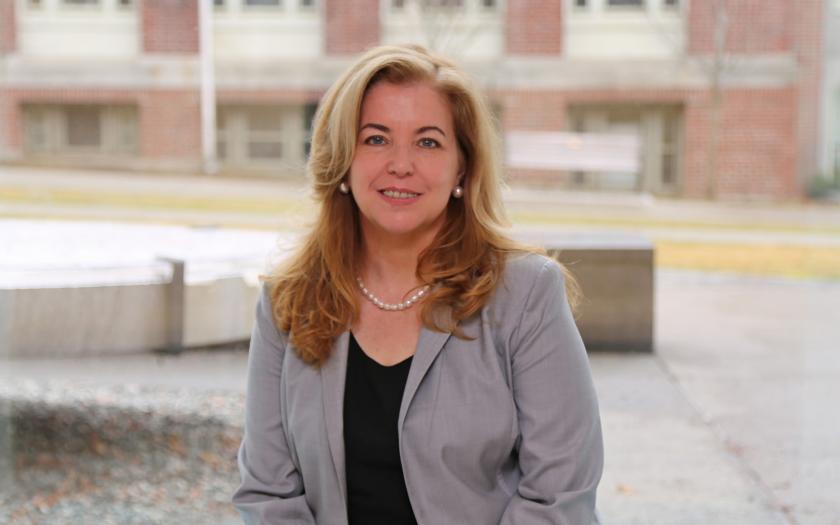February Faculty Spotlight - Vicki Colvin

Vicki Colvin is the Vernon K. Krieble Professor of Chemistry, Professor of Engineering and Molecular Pharmacology, Physiology, and Biotechnology as well as the Director for the Center for Biomedical Engineering at Brown University. Prior to these positions Colvin served as the University’s Provost from July 2015 through July 2016. She moved to Brown from Rice University where she was a professor of chemistry, the Vice Provost of Research, and director of Rice’s Center for Biological and Environmental Nanotechnology. Prof. Colvin received her bachelor’s degree in chemistry and physics from Stanford University in 1988 and her PhD from University of California, Berkeley in 1994. She has received multiple teaching awards, was a recipient of an Alfred P. Sloan Fellowship, and was named one of Discover Magazine’s “Top 20 Scientists to Watch” in 2002.
1) When did you know you wanted to be a biomedical engineer/researcher?
My mother is a chemist and a professor and so she helped me to understand the difference between taking classes and doing research early on. As an undergraduate at Stanford, I had a work-study job in a biology lab in the medical school doing a lot of animal work. That taught me that I did not want to do biology research or work with animals so after 3 years of that I started working instead with a surface scientist in the chemistry department studying reaction kinetics. I loved that this work was more quantitative and I just became completely wrapped up in it. That lab was my favorite place to be and when I wasn’t there I was reading papers about the subject. Research is great for me because I don’t like passive learning, but I love teaching myself and that’s exactly what research is.
2) Of all of the publications you have written, is there one that you are most proud of? Why?
I’m going to pick one that wasn’t glamorous, but is now probably one of my most cited papers. We were studying how colloids could be used to make thin films on glass. My student had been depositing the films by evaporation of solution and I had asked him to understand how many layers we could put down. We ran experiments and collected a lot of quantitative data but I wasn’t sure what to do with it. I spent an entire weekend in the library studying models until I found one that had been used in paint drying that I was able to modify and apply to our data to create a new model. This model is now frequently used and cited for biology applications. My time obsessing about this model in the library taught me how important it is to truly and completely understand data and results.
3) Did you ever do experiments that didn’t work?
There’s an example of a time when we realized we didn’t understand our results completely until after the publication, so in a way that was a failure. We were introducing nanoparticles into cell culture to see how cells responded to the nanoparticle, particularly carbon nanotubes and fullerenes. We did a standard measurement of the dose of particles that killed half the cells in the cultures for controls and experimental groups and came up with a series of data that we published about. Two years later I was still working in that area and had started to do more analysis on the materials. We discovered that there were a lot of molecular impurities (surfactants, etc) in the materials, which I realized may have impacted our previous results. We went back and ran controls from the initial experiments with molecular impurities accounted for and realized that the impurities helped to explain the results. It wasn’t the full story but it was an important part of it. So, in some ways a failed experiment got published, but it was the first work in that field and it’s not uncommon for published results to not be fully understood. It’s just part of the process.
4) How do you choose the projects your group works on?
I try to let the projects be student-driven to some extent. I give students a selection of projects or areas to work in and then let them decide. I believe that the process of choosing gives students ownership and promotes collaboration with me. I also try to chose projects that fulfill two requirements; they investigate a scientific question that is fascinating to me and they have potential to positively impact humans or society. When I was a younger researcher I focused less on the latter requirement but I have realized how important that is to me.
5) What three qualities are most important for ensuring success as a young researcher?
Curiosity, obsession, self-awareness/emotional maturity.